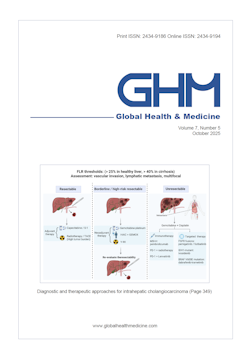Global Health & Medicine 2021;3(5):321-334.
Treatment progress and expansion in Japan: From interferon to direct-acting antiviral
Tahata Y, Sakamori R, Takehara T
Hepatitis C virus (HCV) was first discovered in 1989, and patients infected with HCV were initially treated with interferon (IFN) monotherapy. In the 2000s, pegylated IFN combined with ribavirin was the mainstay of therapy for infected patients, but the sustained virologic response (SVR) rate was less than 50% for patients with HCV genotype 1. To further improve the therapeutic effect, direct-acting antiviral (DAA) was developed, and combination therapy with DAA and IFN has been available since 2011. In addition, IFN-free DAA therapy became available in 2014, and SVR was achieved in more than 95% of patients with chronic hepatitis and compensated cirrhosis. Thus, in just 30 years since the discovery of HCV, we aim to eliminate HCV in almost all patients. However, there are remaining issues to be addressed. Many of the patients who achieved SVR with DAA therapy had advanced liver fibrosis, and it is necessary to verify to what extent DAA therapy improves their prognosis in terms of liver function, hepatocellular carcinoma occurrence, and mortality. Resistance-associated substitutions can cause failure of DAA therapy, and the search for an effective therapy for high-level resistant viruses such as P32 deletion is particularly important. DAA therapy was approved for use in patients with decompensated cirrhosis in Japan in 2019, which is an unmet need so far. It is also important to verify the efficacy and safety in real-world settings. The World Health Organization aims to eliminate HCV by 2030, and Japan must tackle its remaining issues to achieve this goal.
DOI: 10.35772/ghm.2021.01083







